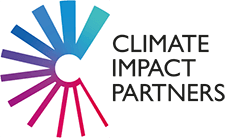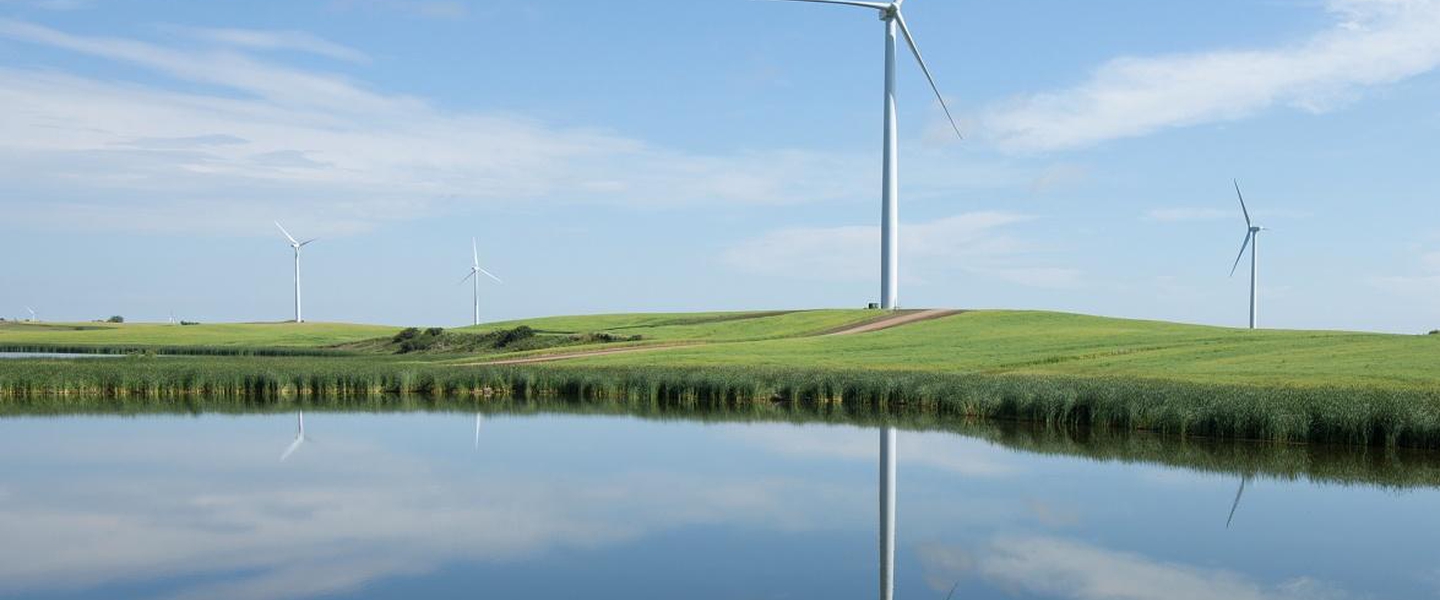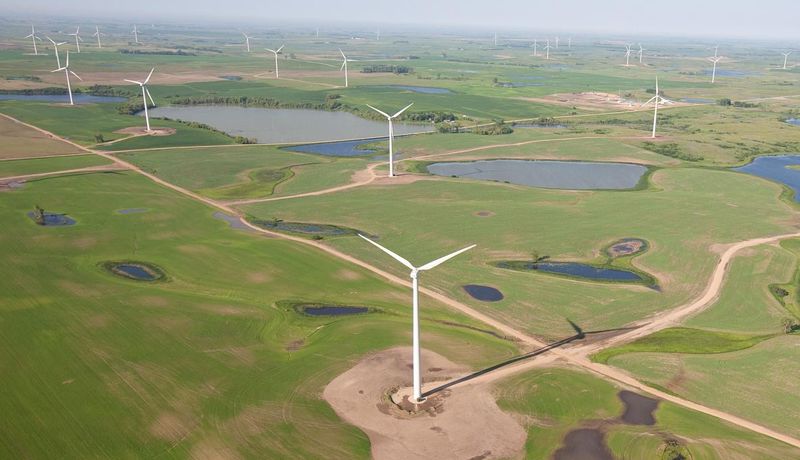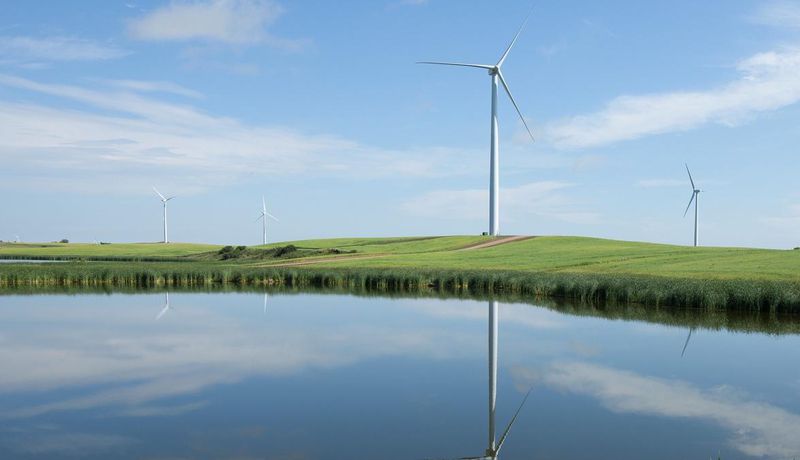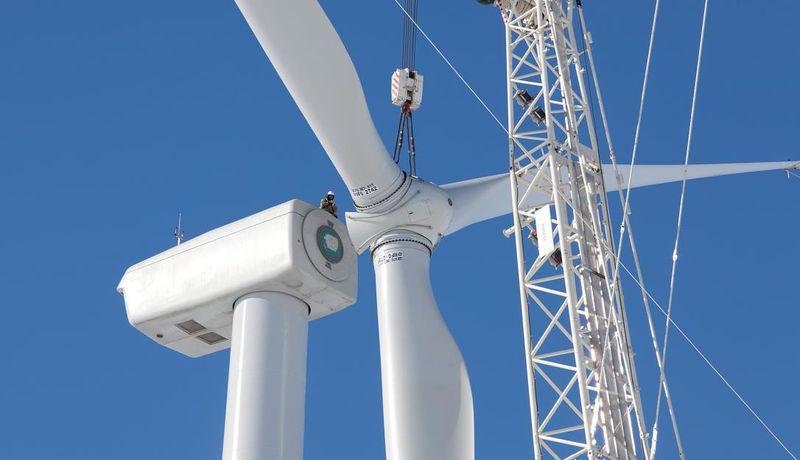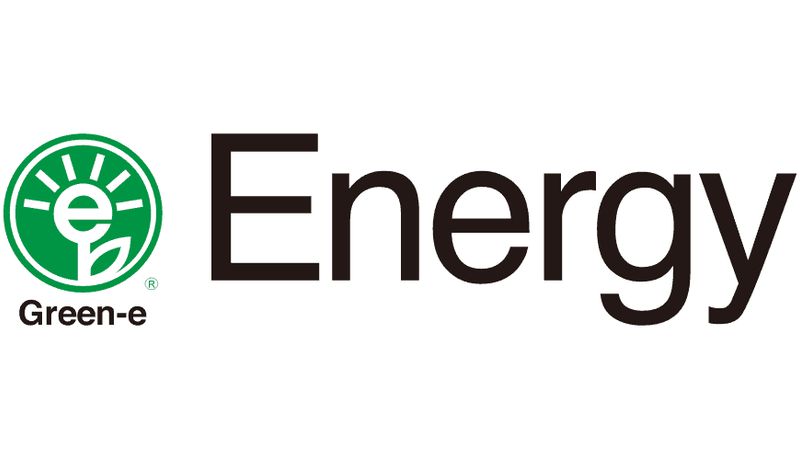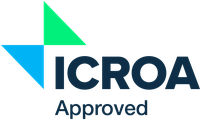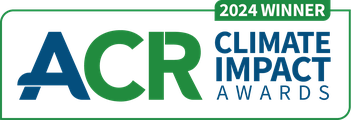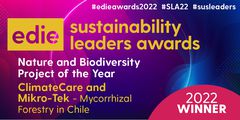What are RECs?
Renewable Energy Certificates (RECs) are a type of Energy Attribute Certificate (EAC) – a market-based instrument for renewable electricity in North America. They represent one megawatt-hour (MWh) of electricity generated from a renewable energy source, which has been delivered to the power grid in the United States and Canada.
When renewable electricity is added to the grid, a REC is issued to certify that an equivalent amount of clean energy has been produced.
Why are RECS important?
Renewable Energy Certificates play a critical role in supporting the transition to a low-carbon and renewable-powered future for several reasons:
Work as credible proof of electricity being of renewable origin
- Without RECs, once electricity is on the grid, its source of origin (fossil fuel or renewable) cannot be distinguished.
- RECs provide a mechanism to prove that renewable energy has been generated and injected into the grid, enabling businesses and suppliers to substantiate their claims of renewable energy use.
Enabling sustainability claims for Scope 2 emissions
- RECs enable businesses and individuals to credibly reduce CO2 emissions from their electricity consumption with renewable energy; this is widely accepted by multiple frameworks such as the Greenhouse Gas Protocol and RE100.
Drive investment into renewable energy
- Demand for renewable electricity is growing, and RECs enable a market for the environmental attributes of this renewable energy. They provide an important revenue stream for renewable energy generators, helping to fund the development and expansion of renewable energy infrastructure – ultimately increasing the amount of clean energy installed on the grid.
Regulatory requirements
- In many US States, electricity utilities have a legal requirement (via Renewable Portfolio Standards (RPS)) to source a percentage of their electricity from renewable sources (creating a compliance market).
Flexibility and accessibility
- RECs allow businesses to “green” their electricity consumption without the need for installing their own on-site renewables, making renewable energy much more accessible to organizations of all sizes.
- They also enable the creation of a voluntary market, where electricity consumers can purchase (and therefore support) clean power generation, even when renewable energy isn’t offered via their local utility.
What is the origin of the REC system in the United States?
The groundwork for the Renewable Energy Certificate system in the United States dates to key legislations, especially the Public Utility Regulatory Policies Act (PURPA) of 1978. PURPA opened wholesale electric markets to non-utility power producers, allowing renewable energy producers to enter a market previously limited by traditional utilities. This legislation laid the foundation for tracking and validating renewable energy generation.
By the end of the 1990s, the idea of tradable certificates representing renewable energy attributes began taking shape:
- 1998: First retail Renewable Energy Certificate (REC) product sale in Massachusetts, signaling interest in both compliance and voluntary markets.
- 1999: The first Renewable Portfolio Standard (RPS) programme in the US is implemented in Texas, which incorporated REC trading for regulatory compliance. This is considered the birth of standardized REC markets in the country.
- 2001: Texas, following up on their RPS, launched the first tracking system in the US. It consisted of a web-based platform to issue, register, trade and retire RECs. This set the model for other states and marked the start of formal REC mechanisms to ensure the underlying Renewable Energy claims were credible and verifiable.
- 2000s: Other states followed with their own tracking systems for RECs, and a patchwork of regional registries developed, each tailored to state-level RPS requirements.
How are RECs created?
Every Renewable Energy Certificate (REC) is created, tracked and retired through a regulated, multi-step process which ensures it’s accuracy, transparency and credibility in clean energy markets.
- To be eligible to receive RECs, renewable energy generators (such as a wind, solar or hydropower facility) must be registered with an accredited issuer or registry.
- As registered renewable energy generators produce a megawatt-hour (MWh) of electricity and deliver it to the grid, they are eligible to receive a REC, issued by an accredited issuer or registry, providing details on location, technology, nameplate capacity, and proof of green power generation. Generation data is generally submitted monthly and may be verified by a third party or grid operator to prevent double counting or fraud.
- Once verified, the registry issues a unique REC per MWh of renewable energy produced and injected into the grid.
How are RECs tracked?
Renewable Energy Credits (RECs) are electronically managed through the official and accredited REC registries. Each certificate includes data on the underlying MWh, such as, generation period, facility, ownership records, and is assigned a unique Identification Number for traceability.
How are RECs traded?
RECs can be bought, sold or transferred between parties, independently of the underlying electricity (they are unbundled from the electricity, which makes a REC effectively an Energy Attribute Certificate) allowing for flexibility in supporting renewable energy through market transactions.
Regional tracking registries and auditors, help ensure that each REC is only issued and claimed once, to maintain high levels of transparency and credibility in the system.
How are RECs retired?
To claim the environmental benefits associated with a REC, they must be retired or (internationally) “redeemed”. Retirement means the certificate is taken out of circulation, and cannot be transferred, used, or sold again, proving that the holder supported and claimed the renewable electricity equivalent to the REC.
Retirement is recorded in the registry, certifying that the MWh has been removed from the system, and the beneficiary is the sole owner of those environmental attributes related to the REC.
What is the connection between electricity generation and the REC?
Every Renewable Energy Certificate (REC) is directly linked to the electricity generated from renewable sources. Each REC represents 1 megawatt-hour (MWh) of electricity generated and delivered to the power grid by a renewable energy facility.
They are three key points on the connection between the two:
- Dual Output: When a renewable energy generating facility produces electricity, it also produces two subproducts: the actual electrons delivered to the grid, and the REC, which represents the renewable attributes of the renewable MWh.
- Substantiating Renewables: Without the REC, power from a renewable energy source is not recognized as renewable for regulatory or voluntary claims purposes in the United States.
- Environmental Claims: Only the entity that owns and retires the REC can claim usage of the Renewable energy, regardless of where and by who the actual electrons are used.
What are the REC Tracking Systems and Registries?
The Renewable Energy Certificates (RECs) tracking systems, which are also called registries, are electronic platforms which manage the issuance, ownership, transfer and retirement of the RECs. They provide the systems, which create transparency in both the voluntary and compliance green electricity markets – authenticating renewable energy claims and preventing double-counting.
REC tracking systems have four core functions:
- Issuance: Issue one REC per verified megawatt-hour of renewable electricity generated.
- Tracking: Assign unique identifiable numbers to each REC, to allow for detailed tracking of the energy source, technology and ownership.
- Transfer: Enable secure transfer of RECs between market participants (Generators, utilities, traders, brokers, etc.)
- Retirement: Keep a record of the retirement of the RECs, which are permanently removed from circulation to verify compliance with voluntary claims or compliance renewable standards.
What are the major REC registries in the United States?
The United States doesn’t have a single national registry, instead it operates a network of ten key regional systems, generally aligned with the electric grid regions or state subgroupings. The structure reflects the state-by-state energy policy and market structures.
While some states with Renewable Portfolio Standards (RPS) are tied to a specific registry, others like The North American Renewables Registry (NAR) and The Midwest Renewable Energy Tracking System (M-RETS) allow for generators from anywhere in the US and Canada – making them popular within the voluntary REC Market.
Other states may participate in multiple systems, or use a designated system based on RPS rules.
What are the other International Systems?
Renewable Energy Certificates (RECs) in the US are a type of a global system of Energy Attribute Certificates that track and verify renewable electricity production and consumption. However, the design, market structure and international recognition of each system are different in every region.
The key international energy attribute certificate (EAC) systems are:
What are the similarities among Energy Attribute Certificates systems?
- All the tracking systems provide 1 unique electronic certificate for each MWh of renewable energy that has been generated and supplied to the grid.
- Each certificate is issued, accredited and retired in a way to prevent double-counting and enable credible renewable energy use and carbon reduction claims.
- They are widely accepted and used by major reporting protocols for scope 2 emissions reductions.
Compliance vs Voluntary REC Markets in the US
Renewable Energy Certificates in the United States are divided into two market segments: compliance markets and voluntary markets. They both play a vital role in advancing renewable energy adoption and supporting consumer claims of clean energy use.
What is the compliance REC Market?
- Purpose: Designed to meet legally mandated renewable energy targets set by state policies, known in the US as Renewable Portfolio Standards (RPS).
- Participants: Electricity companies, Energy Suppliers, utilities and regulated entities.
- Function: Entities in 29 states, Washington D.C., and Puerto Rico, are required by law to purchase and retire a certain percentage of RECs out of their total electricity portfolio, from renewable sources.
- Mechanisms: RECs can be obtained by self-generation or in the open market from another generator.
The key features include:
What is the voluntary REC Market?
- Purpose: Enables organizations, businesses and individuals to support new renewable energy developments beyond the requirements and scope of the RPS systems.
- Participants: Residential consumers, corporations and institutions not required to report to an RPS, or those wishing to exceed and contribute beyond the RPS requirements.
- Function: Buyers purchase and retire RECs voluntarily to “green” their electricity use, allowing them to meet sustainability goals and/or demonstrate leadership.
The market features includes:
States without RPS rely entirely on the voluntary market to drive renewable capacity growth. Unsold RECs in RPS states are often available for the voluntary market, however, they can be very limited in states with aggressive RPS goals, reducing REC availability, and in consequence, increasing pricing of RECs from these states.
Why do companies buy renewable energy certificates?
Renewable Energy Certificates (RECs) are now widely integrated into sustainability and net-zero strategies as a practical mechanism for end users to reduce their scope 2 carbon emissions from purchased electricity.
There are a few ways RECs can be integrated into with carbon credit strategies as part of broader sustainability and net-zero plans:
- Reducing scope 2 emissions: When a company purchases and retires RECs equivalent to its electricity consumption, they can offset the emissions associated with their energy use, essential in reporting and meeting climate goals, including Science-Based Targets initiative (SBTi).
- Flexibility in Renewable Procurement: RECs give companies the ability to support renewable energy without needing on-site generation or entering into complex and costly Power Purchase Agreement (PPA). This allows business to strategically source EACs from regions aligned with their operations or sustainability goals – especially where direct renewables are unavailable or expensive.
- Completing Sustainability Efforts: Often even with PPAs and on-site generation, companies often fall short of fully achieving their renewable energy targets. RECs play a vital role bridging that “last mile” to help close the gap.
How can you buy Renewable Energy Certificates (RECs)?
Purchasing unbundled RECs, based on the best practices from the RE100 2025 technical criteria, is one of the five recognized corporate renewable procurement types. RECs can be bought through multiple channels, which will vary depending on your specific needs.
In order to get unbundled RECs, end users should engage with companies that can facilitate the sale and retirement of RECs on their behalf. For Green-e, you must engage with an Authorized Green-e Seller such as Climate Impact Partners who will support you throughout your journey of procuring renewable electricity.
What is the Green-e® certification for RECs?
Green-e is North America’s leading third-party certification program for renewable energy, managed by the non-profit Center for Resource Solutions (CRS). Its role is to provide enhanced credibility and additionality of renewable energy claims by enacting 3rd party verification and certification of renewable electricity and renewable energy certificates (RECs).
How does Green-e® work?
The Green-e certification allows for consumer protection and transparency into voluntary renewable energy markets by adding an independent third-party verification layer on top of the existing REC tracking systems. Considering that tracking systems already document the creation, ownership and retirement of the RECs, the Green-e certification ensures that the certified RECs meet higher environmental, quality and transparency standards beyond the basic tracking.
What are the benefits of Green-e certification?
- Stricter criteria: Green-e Certified RECs are required to originate from eligible assets, which must be from renewable sources, limiting technologies to wind, solar, geothermal, some hydropower and some biomasses. These generation assets must have been built or repowered within the past 15 years. The purpose of this is to encourage investment in new renewable capacity.
- Rigorous verification: All RECs must be verified to be Green-e certified. CRS conducts annual audits to prevent double counting, and confirm RECs are not being used for any RPS compliance obligations.
- Transparency and traceability: As the certification requires full disclosure of the origin, type and location of renewable generation, buyers get confirmation of their purchase supporting real renewable energy in the grid.
- Exclusivity: Green-e certified RECs cannot be sold in both the compliance and voluntary markets, hence, providing additional assurance regarding the purchaser’s exclusive right to make environmental claims.
- Geographic and vintage criteria: REC Facilities within the Green-e program must be located in specific eligible regions (US, Canada and Puerto Rico). They must also be generated within a 21-month window tied to the customer’s usage year (i.e. for Reporting Year 2025 the Green-e eligible period of generation would go from 1st of July 2024 to 31stof March 2026).
- Recognition: Green-e certified RECs are recognized or required by many of the leading sustainability and green building standards, such as RE100 and Leadership in Energy and Environmental Design (LEED) from the Green Building Council in the US.
What is the Green-e® certification process like?
Our Role: Supporting Your Renewable Electricity Journey
At Climate Impact Partners, we bring over 27 years of experience in environmental markets to support organizations in sourcing credible, high-integrity renewable electricity through Renewable Energy Certificates (RECs). As an Authorized Green-e® Energy Seller and a longstanding trusted partner to companies around the world, we offer tailored solutions that align with your sustainability goals, reporting frameworks, and operational needs.
Whether you are just beginning your renewable energy journey or scaling up to meet net-zero targets, our team provides expert guidance across every step of the REC lifecycle, from procurement and retirement to compliance support and impact storytelling. Our clients benefit from direct access to best practices, audited supply, and deep market knowledge, ensuring that each REC purchase delivers both environmental credibility and strategic value.
Want to learn more?
Contact us to work with you and meet your renewable energy goals
Frequently Asked Questions
What's the difference between an EAC and a REC?
Energy Attribute Certificate (EAC) is a broad, global term that refers to any certificate that proves one megawatt-hour (MWh) of electricity was generated from a renewable source. It’s an umbrella term used worldwide.
Renewable Energy Certificate (REC) is a type of EAC used specifically in North America, primarily the United States and Canada.
What is the operational mechanism behind Renewable Energy Certificates?
The operational mechanism behind Renewable Energy Certificates (RECs) involves a series of distinct steps designed to verify, track, trade, and retire the renewable attributes of electricity generation, ensuring transparency and credibility in renewable energy claims.
How long does it take for a REC to be issued after renewable energy is generated?
The time it takes for a Renewable Energy Certificate (REC) to be issued after energy is generated depends on the specific certification and registry system. Generally, it involves data submission, verification, and then issuance. Once the generation data is verified by the registry or issuer, RECs are typically issued shortly thereafter.
What is the difference between bundled and unbundled RECs?
The core difference between a bundled and unbundled REC, is their relationship with physical electricity, and, how they are purchased.
- Bundled RECs are sold together with the physical renewable electricity, and its associated EAC, in a single transaction. They tend to be often bought through a Purchase Power Agreement (PPA).
- Unbundled RECs are sold separately from the physical electricity, allowing anyone to buy a REC, regardless of their electricity supplier. They are a flexible and scalable option to meet sustainability goals without altering existing power contracts.
How big is the renewable energy certificate market?
The REC market is currently worth USD$27.99 billion in 2025, with a CAGR of 10.2% (Yahoo Finance Report, 2025). The market is expected to grow towards USD $45.45 billion in 2030, driven by favorable government policies, corporate sustainability initiatives and climate change awareness in the general public.
How much do RECs cost?
The cost of RECs depends on the region, type of certificate, market demand, and the quality or certification standards of the certificate. Prices are typically lower during the summer, making July and August the smart time to secure your volumes and lock in your budget. Contact our global team of experts to get latest EACs pricing.
